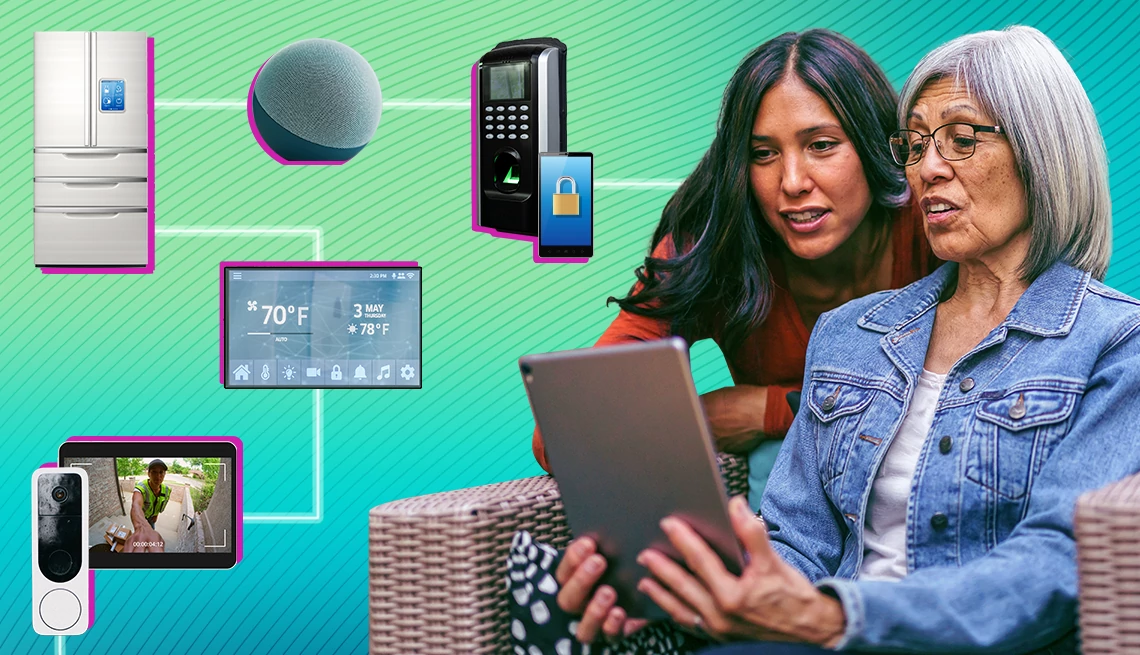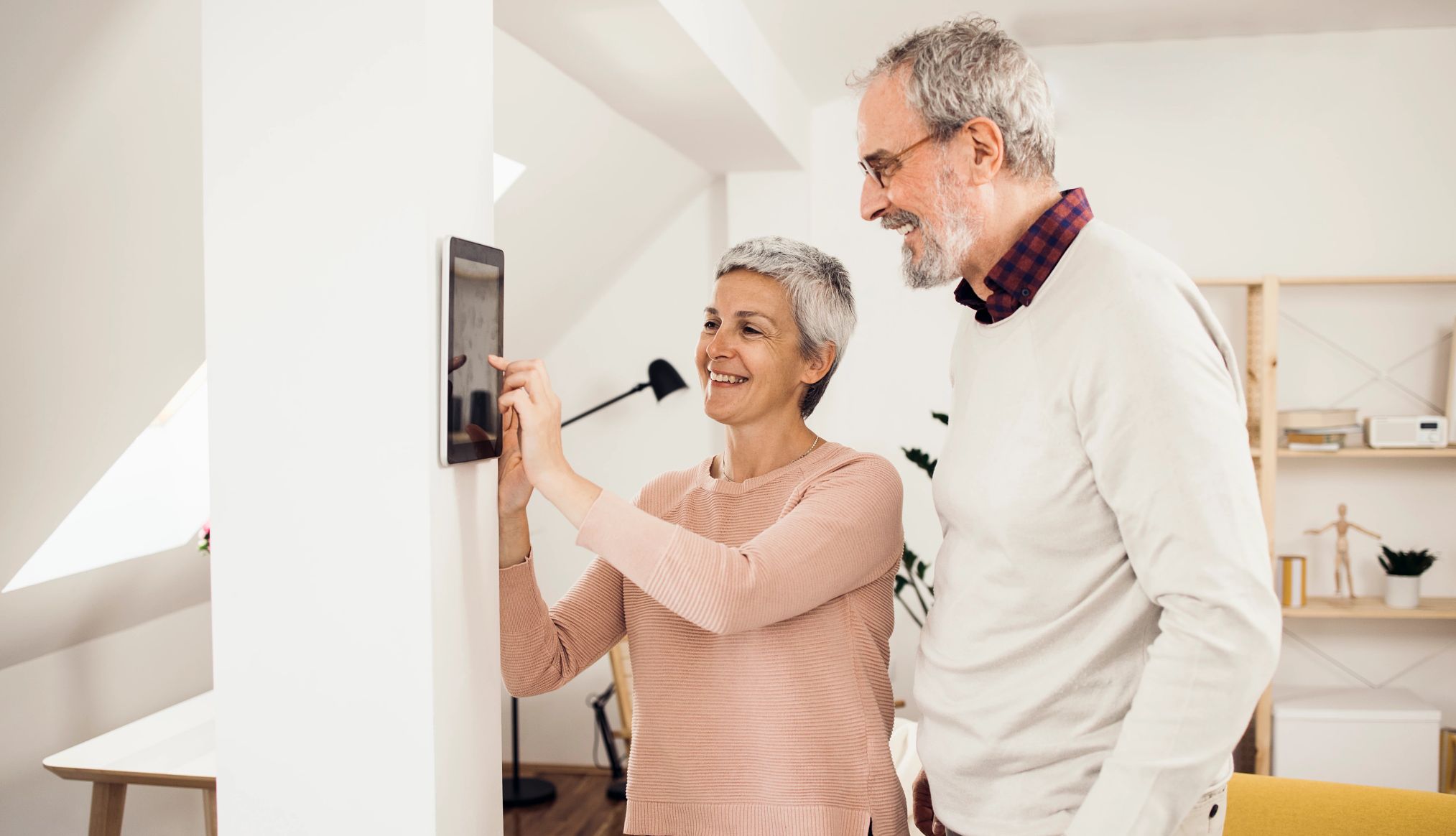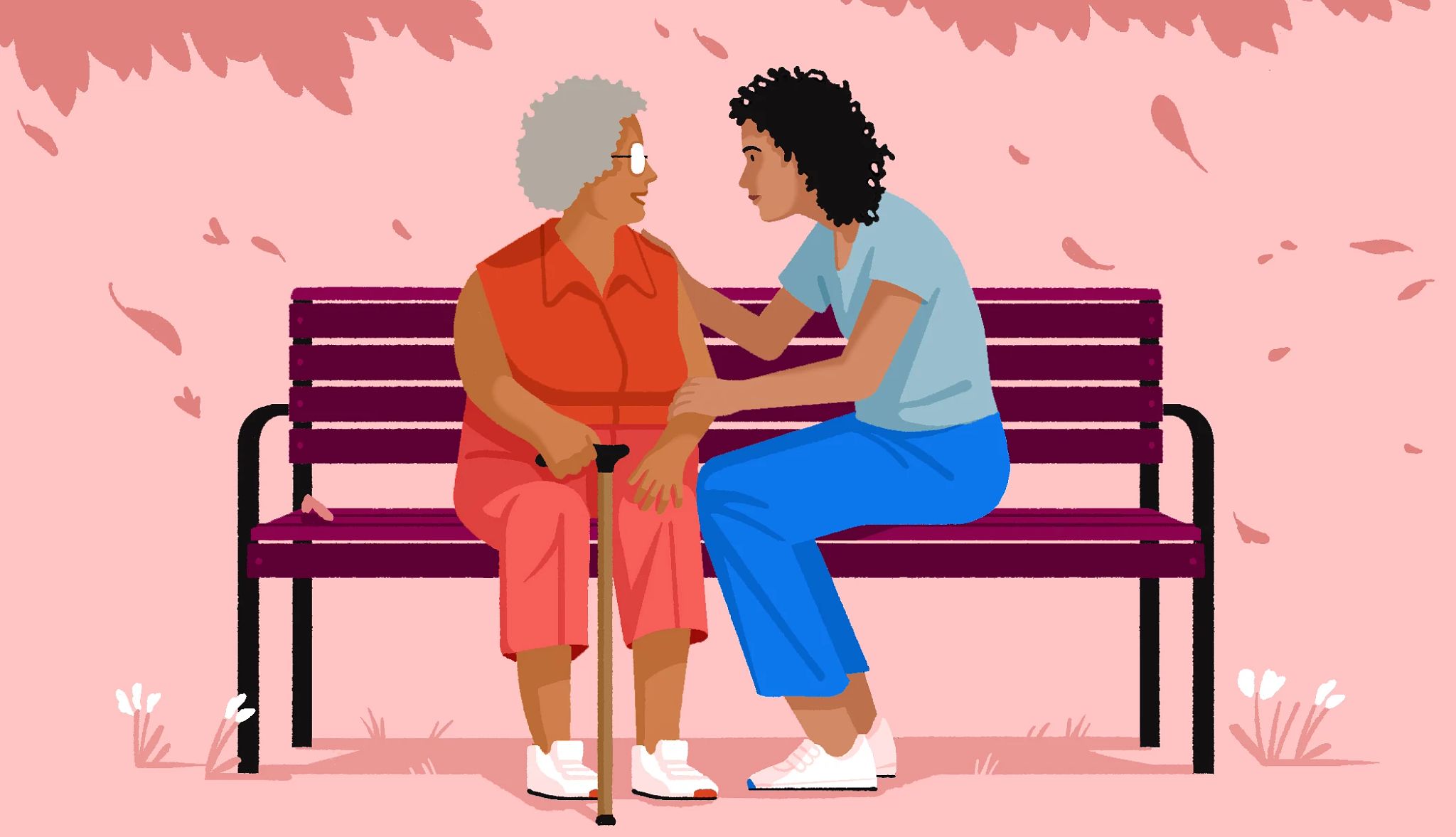AARP Hearing Center


In this story
Help from technology • 1. Smart lights • 2. Smart TVs • 3. Smart thermostats
• 4. Smart speakers • 5. Smart beds • 6. Activity sensors • 7. Fall detectors •
8. Security systems • 9. Video doorbells • 10. Air quality detectors • 11. Robot mowers • 12. Robot cleaners • 13. Smart appliances • 14. Pill dispensers •
15. Smart locks • 16. Bathroom tech
Getting older doesn’t have to mean leaving your home.
New technology promises to make aging in place easier, safer and more satisfying. In some cases, it can even lend a hand to caregivers.
Smart tech that is connected to the internet often can be controlled from anywhere — inside or outside the home. Some of the most useful devices learn your preferences and routines and adjust to you. Or they can provide insight to a loved one who helps out.
“What becomes even more valuable with smart devices is when data reveals behavioral patterns that could alert a caregiver when something seems off,” says Andy Miller, senior vice president of AARP Innovation Labs.
If you or a loved one feel dismissive of smart devices, realize that you may be using a few already: About a third of Americans 50 and older have a smart speaker such as an Amazon Echo or Google Nest, almost a quarter have a device that helps with security, according to AARP’s 2024 Tech Trends and Adults 50-Plus survey. And 90 percent own a smartphone, 75 percent a smart TV.
Prices go down and ease of use increases as products stay on the market. Zenith debuted the now-ubiquitous TV remote in 1950. But not until the 1980s could you find them included with practically every TV sold. Now you can’t do without one, right?
Here’s an overview of products that can help around the house. Click on the links below to get the details.
1. Smart lights
Smart lamps and overhead lights can be turned on and off through an app. Using sensors, they can be programmed to turn on when detecting movement for security outside your home or safety inside it, such as when a person gets up at night.
2. Smart TVs
Sure, you spend countless hours streaming movies, shows, live news and sports with an internet-connected TV. But smart TVs can also be used as a webcam for video chats, telehealth calls with your doctor or virtual exercise sessions.
3. Smart thermostats
Typically, a smart thermostat from providers such as Ecobee, Google Nest or Honeywell can learn your indoor climate preferences over time. When the thermostat detects the house is empty, it can reduce the amount of heating or cooling, shaving a few bucks off your energy bill. Includes remote control through an app for the resident or a caregiver.
4. Smart speakers
With voice commands, you can play music, get the weather forecast, have questions answered and more from a digital assistant that you can summon from a fairly small device.
This device can become the command center for your home, providing voice control for other products. Smart speakers are also popular in the kitchen for setting timers.
Related: How to turn off your smart home gadgets
















































































More From AARP
Take Control, Remotely, of Your Parents’ Technology
When someone is struggling, you can assist from afarCan Artificial Intelligence Solve Caregiving’s Crisis?
AI may detect changes before a problem can get worseThe Future of Aging in Place … Is Moving?
Creative new housing options are emerging that allow older residents to stay in their community
Recommended for You